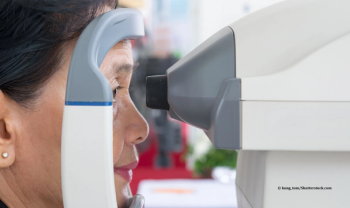Benjamin P. Casella, OD, FAAO
Articles by Benjamin P. Casella, OD, FAAO

Monitoring and measuring a glaucoma patient's intraocular pressure can be challenging with patients' busy schedules. Optometry Times Chief Optometric Editor Benjamin P. Casella, OD, FAAO, gives his reasons why home tonometry can help drive a treatment partnership between doctor and patient.

Benjamin P. Casella, OD, FAAO, and chief optometric editor of Optometry Times, discusses three things on narcotic prescribing and drug diversion.

Sudden eye dilation can cause a patient to panic and send him straight to your practice. In the first edition of Casella’s Corner, Optometry Times Chief Optometric Editor Ben P. Casella, OD, FAAO, discusses a particular patient case that began with a surprising beginning.

Patients can enter your practice with a variety of fears regarding their vision problems. Benjamin P. Casella, OD, FAAO, and chief optometric editor of Optometry Times, explains the importance of quelling patients' fears and making them comfortable during their exam.

Evolving procedures continue to change the landscape of glaucoma treatments. Chief Optometric Editor Benjamin P. Casella, OD, FAAO, explores how the use of minimally (or micro-) invasive glaucoma surgery (MIGS) techniques can increase positive outcomes when treating glaucoma patients.

As the DOC Care Access Act, which has the backing of the American Optometric Association and the American Dental Association, continues to gain traction, the conversation will likely become more vocal on all sides.

I believe that the future of optometry, with all its hitches, challenges, and opportunities, is best met head-on if we all communicate effectively with one another.

The notion of patients not coming in as advised for eye examinations can be troubling. For example, when a patient has an eye disease as potentially significant as glaucoma and chooses to ignore its presence, there is cause for concern on the part of the doctor.

Taking note of a patient’s behavior can provide a multitude of clues on the patient’s current condition. Perhaps the most apparent observational feature would be a patient’s gait.

Most of the medications, both new and old, we prescribe for glaucoma are quite safe-especially if we educate our patients to occlude their puncta.

As technology and glaucoma care evolves, so must our treatment guidelines

With the advent of electronic health records, it is now easier than ever to keep up with what medications a patient is actually taking, and (especially in the arena of glaucoma) the several classes of medications, such as steroids, beta blockers, and antihistamines, that can influence how patients’ eyes behave. With this in mind, I had a patient come in the other day with an interesting question regarding her intraocular pressure (IOP).

With that in mind, there are several aspects of my own EHR software that I really appreciate over paper charts. Besides the fact that I can actually read what I wrote (or typed), one thing that I particularly enjoy is the fact that I am able to consistently look at a new patient’s optic nerves without knowing his or her intraocular pressure (IOP) values beforehand.

For years now, there has been considerable evidence indicating that glaucoma should be considered a neurological disease and not an entity isolated to the eyes alone. Perhaps the most compelling evidence for such a characterization is the fact that the retinal ganglion cells affected by glaucoma do not synapse until they arrive at the midbrain (specifically, the lateral geniculate nucleus).

A few days ago, a 61-year-old white male presented with a gradual and painless loss of vision in his left eye.





.png)


